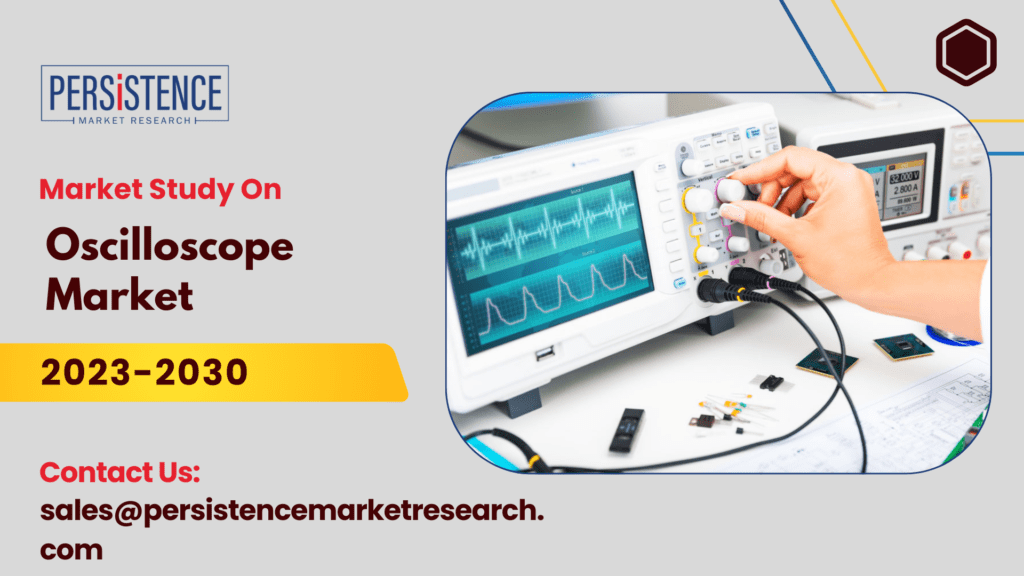
An oscilloscope is a versatile electronic test instrument used across various industries and job roles to measure and analyze electronic signals. Its ability to provide detailed graphical representations of signal waveforms makes it an invaluable tool for professionals involved in electronic design, maintenance, and research. This comprehensive analysis explores the diverse job roles that utilize oscilloscopes, detailing how these professionals leverage the tool to perform their responsibilities effectively.
For More Industry Insight: https://www.persistencemarketresearch.com/market-research/oscilloscope-market.asp
1. Electrical Engineers
Job Role and Responsibilities
Electrical engineers are among the primary users of oscilloscopes. They employ these instruments to design, test, and troubleshoot electrical circuits and systems. Oscilloscopes help electrical engineers visualize the behavior of electronic signals, ensuring that designs meet performance specifications and function correctly.
Applications:
- Circuit Design: Electrical engineers use oscilloscopes to analyze waveforms and validate the performance of circuits during the design phase. By observing signal characteristics such as amplitude, frequency, and phase, they can refine designs to achieve desired outcomes.
- Troubleshooting: Oscilloscopes are essential for diagnosing issues in electronic circuits. Engineers use them to detect signal distortions, timing errors, and other anomalies that can affect circuit performance.
- Validation and Testing: Engineers employ oscilloscopes to verify that electronic devices meet industry standards and regulatory requirements. They test prototypes and finished products to ensure reliability and accuracy.
2. Electronics Technicians
Job Role and Responsibilities
Electronics technicians work with oscilloscopes to maintain and repair electronic equipment and systems. They use oscilloscopes to diagnose faults, perform routine maintenance, and ensure that devices operate correctly.
Applications:
- Fault Diagnosis: Technicians use oscilloscopes to identify and troubleshoot issues in electronic devices. By analyzing signal waveforms, they can pinpoint malfunctions and determine appropriate repairs.
- Calibration and Maintenance: Oscilloscopes are used to calibrate electronic equipment, ensuring that it operates within specified parameters. Technicians regularly perform maintenance tasks to keep devices functioning optimally.
- Quality Assurance: In manufacturing settings, electronics technicians use oscilloscopes to conduct quality checks on products, ensuring that they meet performance standards before they are shipped to customers.
3. Research and Development Scientists
Job Role and Responsibilities
Research and development (R&D) scientists use oscilloscopes in various fields, including telecommunications, aerospace, and biomedical research. They rely on oscilloscopes to explore new technologies, conduct experiments, and develop innovative solutions.
Applications:
- Experimental Analysis: R&D scientists use oscilloscopes to measure and analyze signal behavior in experimental setups. This data helps them understand the performance of new technologies and materials.
- Technology Development: Oscilloscopes are crucial in the development of advanced technologies, such as high-speed communication systems and novel electronic components. Scientists use them to validate concepts and refine prototypes.
- Data Collection: Scientists collect and analyze data from experiments using oscilloscopes, contributing to research papers, patents, and technological advancements.
4. Telecommunications Engineers
Job Role and Responsibilities
Telecommunications engineers use oscilloscopes to design, test, and maintain communication systems, including telephone networks, radio systems, and satellite communications. Oscilloscopes help them ensure that signals are transmitted and received accurately and efficiently.
Applications:
- Signal Analysis: Telecommunications engineers use oscilloscopes to analyze signal integrity and quality. They examine parameters such as signal amplitude, frequency, and modulation to ensure optimal performance.
- System Troubleshooting: Oscilloscopes are used to troubleshoot issues in communication systems, such as signal degradation or interference. Engineers diagnose problems and implement solutions to maintain system reliability.
- Network Testing: Engineers employ oscilloscopes to test and validate network components, including transmitters, receivers, and signal processors. They ensure that network equipment meets performance standards and operates effectively.
5. Automotive Engineers
Job Role and Responsibilities
Automotive engineers use oscilloscopes to develop, test, and troubleshoot electronic systems in vehicles. As modern vehicles increasingly rely on complex electronic systems, oscilloscopes become essential tools for ensuring their functionality and performance.
Applications:
- Diagnostics: Automotive engineers use oscilloscopes to diagnose faults in electronic control units (ECUs) and other vehicle components. They analyze signal waveforms to detect issues such as faulty sensors or malfunctioning control systems.
- System Calibration: Oscilloscopes help engineers calibrate vehicle electronic systems to ensure accurate performance. They adjust settings and verify that components operate within specified parameters.
- Development and Testing: Engineers use oscilloscopes to test new automotive technologies, such as advanced driver assistance systems (ADAS) and electric vehicle components. They ensure that these technologies meet performance and safety standards.
6. Medical Device Engineers
Job Role and Responsibilities
Medical device engineers utilize oscilloscopes to design, test, and maintain electronic components in medical equipment. Oscilloscopes are critical for ensuring that devices meet stringent performance and safety standards.
Applications:
- Signal Analysis: Engineers use oscilloscopes to analyze signals from medical devices, such as electrocardiograms (ECGs) and imaging systems. They ensure that signal quality meets clinical requirements and diagnostic accuracy.
- Device Testing: Oscilloscopes are employed to test medical devices during development and production. Engineers verify that devices operate correctly and meet regulatory standards before they are approved for use.
- Troubleshooting: Engineers use oscilloscopes to diagnose and resolve issues in medical equipment. They analyze signal waveforms to identify faults and implement corrective actions.
7. Educational and Training Professionals
Job Role and Responsibilities
Educational institutions and training programs use oscilloscopes to teach students and trainees about electronics and signal analysis. Oscilloscopes are essential tools for hands-on learning and practical experience in electronic measurement.
Applications:
- Teaching and Training: Educators use oscilloscopes in classrooms and laboratories to demonstrate fundamental concepts in electronics. Students learn how to operate oscilloscopes, measure signals, and analyze waveforms.
- Curriculum Development: Educational professionals incorporate oscilloscopes into curricula to provide students with practical experience. This hands-on learning helps students understand theoretical concepts and prepare for careers in electronics and engineering.
